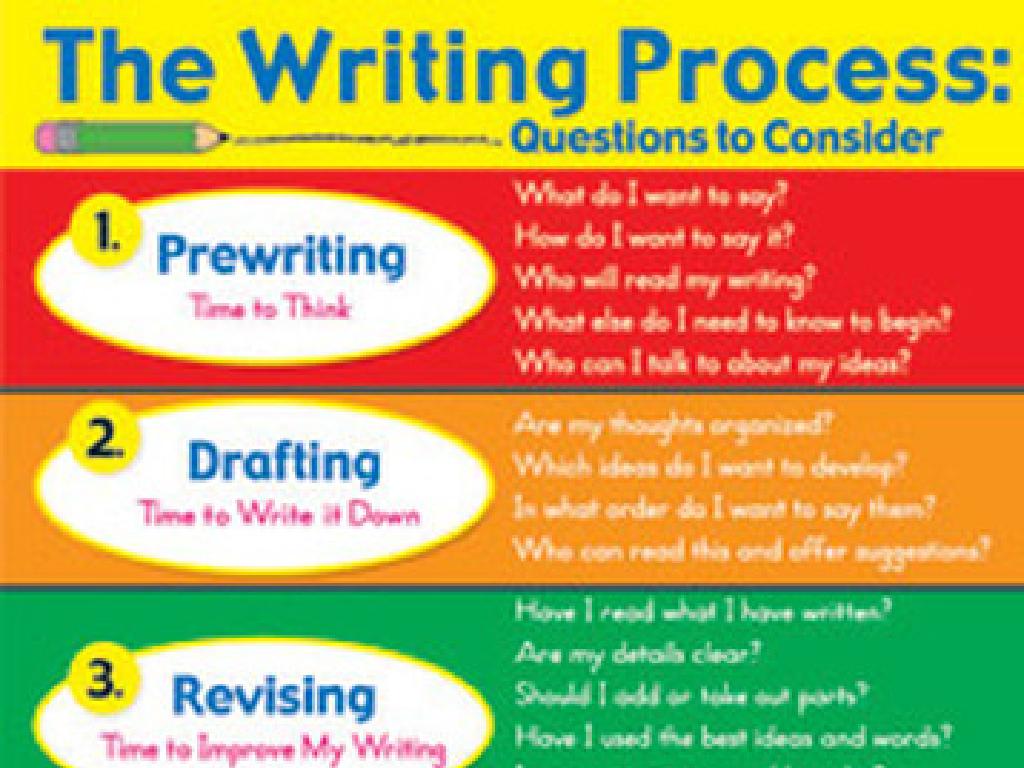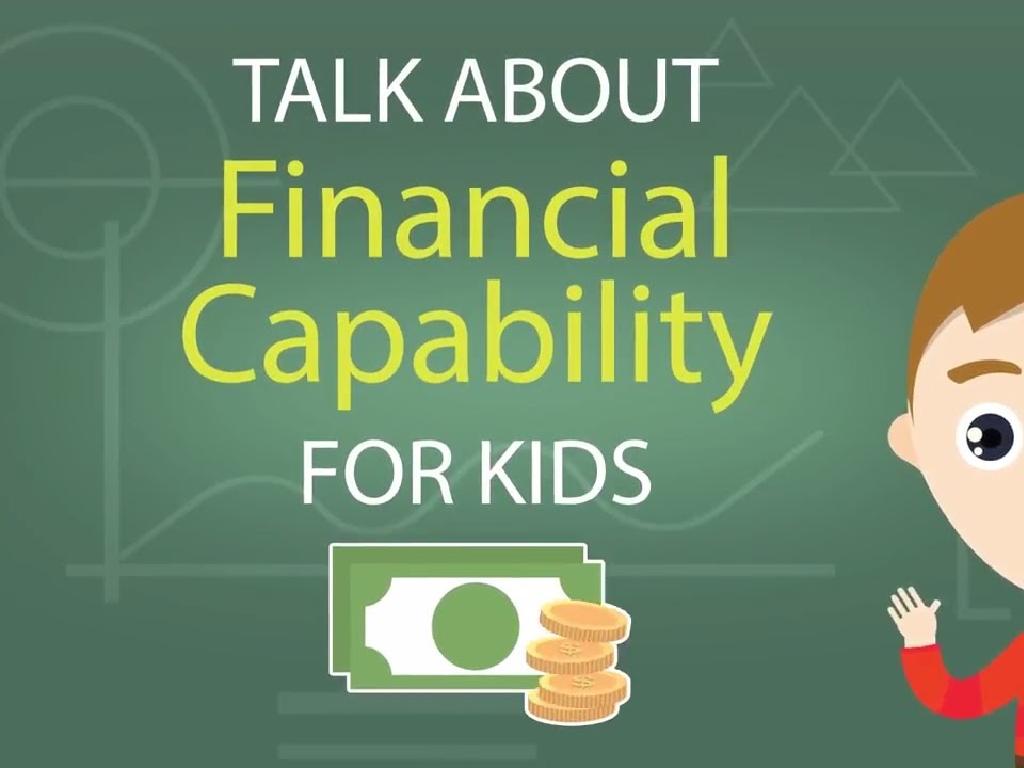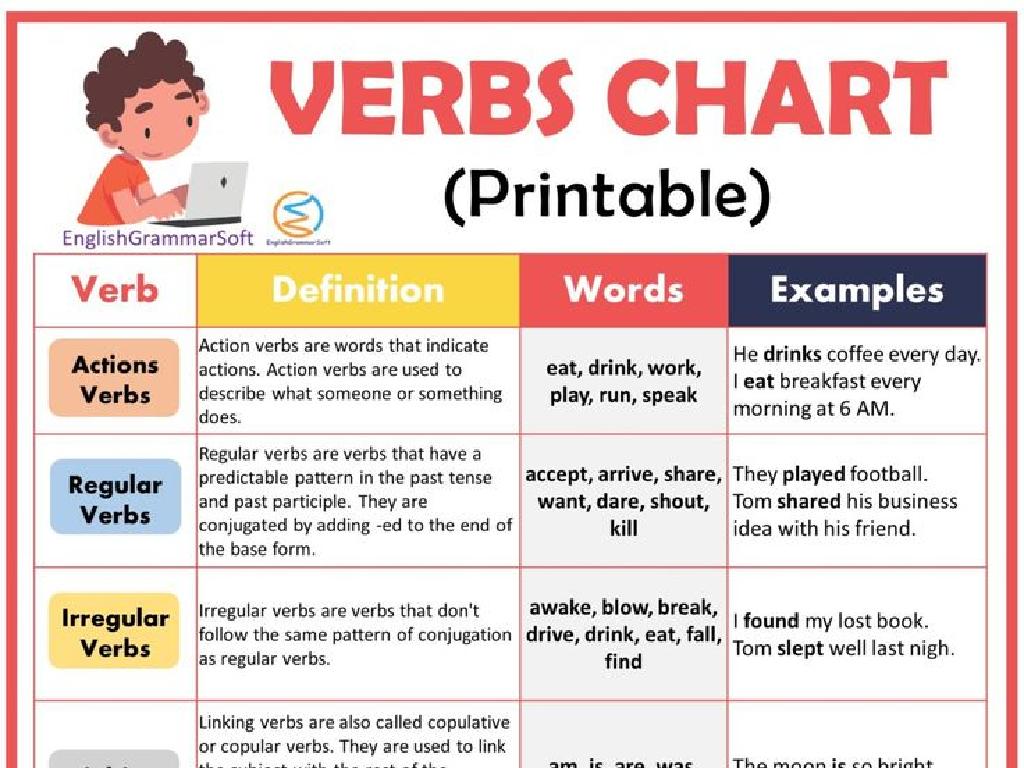Changes To Earth'S Surface: Earthquakes
Subject: Science
Grade: First grade
Topic: Earth Events
Please LOG IN to download the presentation. Access is available to registered users only.
View More Content
Earth Events: Earthquakes
– Earth changes in many ways
– What is an earthquake?
– A big shake of the ground caused by moving rocks beneath
– During an earthquake
– Ground shakes, rolls, and buildings can move
– Staying safe in earthquakes
– We drop, cover, and hold on to stay safe
|
This slide introduces first graders to the concept of earthquakes as a part of Earth events. Begin by discussing the various ways Earth can change, setting the stage for understanding natural events. Ask the students if they know what an earthquake is to gauge their prior knowledge. Explain that an earthquake is like a sudden, big shake of the ground that happens because rocks deep inside the Earth are moving. Describe what happens during an earthquake, such as the ground shaking and sometimes buildings moving. Emphasize safety measures like ‘drop, cover, and hold on’ to protect themselves during an earthquake. Use simple language and encourage questions to ensure understanding.
What is an Earthquake?
– Earthquakes make the ground shake
– Like jumping on a wobbly bed
– Imagine how the bed moves when you jump; that’s like an earthquake!
– They start deep inside the Earth
– They happen where two pieces of Earth’s crust meet and slip past each other
– Earthquakes can be big or small
|
This slide introduces the concept of earthquakes to first graders by comparing it to the familiar feeling of jumping on a bed. Explain that earthquakes are natural events that occur when parts of the Earth’s surface move suddenly. This movement is often caused by the Earth’s plates sliding past one another, which can happen deep underground. Emphasize that earthquakes can vary in size; some are so small that we hardly feel them, while others can be strong enough to cause the ground to shake noticeably. Encourage students to ask questions and share any experiences they might have had with small tremors or discuss earthquake drills they’ve practiced.
Why Do Earthquakes Happen?
– Earth has big pieces called ‘plates’
– Imagine a cracked eggshell, those pieces are like Earth’s plates
– Plates sometimes bump and slide
– It’s like when we accidentally bump into a friend
– Moving plates can shake the ground
– Think of riding a bumpy bus ride, but it’s the Earth moving
– This shaking is what we feel during an earthquake
|
This slide introduces the concept of tectonic plates and their role in causing earthquakes. Explain that the Earth’s surface is like a giant puzzle made of tectonic plates. These plates are always moving, but we don’t feel them most of the time. When they do move suddenly, they can bump into each other or slide past one another, which can make the ground shake. This is what we experience as an earthquake. Use simple analogies like a cracked eggshell to represent the Earth’s plates and compare the sudden movement to a bumpy bus ride to help first graders understand the concept. Encourage the students to ask questions and think about times they’ve felt something shake to relate to the idea of an earthquake.
What Can Earthquakes Do?
– Earthquakes create ground cracks
– Buildings may shake or fall
– Safety measures are important
– We learn what to do to stay safe during an earthquake
– Practice earthquake drills
– Like ‘Drop, Cover, and Hold On’ during a drill
|
This slide aims to educate first-grade students on the effects of earthquakes and the importance of safety measures. Begin by explaining that earthquakes can cause the ground to crack and can make buildings shake, which might be scary, but it’s a natural Earth event. Emphasize that while these things can happen, there are ways to stay safe, such as practicing earthquake drills and learning safety procedures like ‘Drop, Cover, and Hold On.’ Encourage students to talk about safety drills they may have practiced at school or at home. The goal is to ensure students understand the power of earthquakes while also feeling prepared and secure with the knowledge of safety practices.
Staying Safe During an Earthquake
– ‘Drop, Cover, and Hold On’ rule
– When the ground shakes, quickly squat and cover your head, and stay put.
– Get under sturdy furniture
– Find a strong table or desk and crawl underneath for protection.
– Cover your head well
– Use your arms to protect your head from falling objects.
– Listen to adults for guidance
– Teachers and parents will tell you what to do to stay safe.
|
This slide is crucial for teaching first graders about earthquake safety. Emphasize the ‘Drop, Cover, and Hold On’ technique as the primary response to an earthquake. Demonstrate how to quickly get under a piece of sturdy furniture, like a table or desk, and use both hands to protect the head and neck. Remind children that during an earthquake, they should always listen to the instructions of a grown-up or teacher who will guide them to safety. Practice this safety drill in class to ensure students understand and can perform the actions correctly. Reinforce the importance of staying calm and following these steps to stay safe during an earthquake.
Let’s Pretend: Earthquake Safety Practice
– Practice earthquake safety steps
– Remember: Drop, Cover, and Hold On!
– Get down low, take cover under sturdy furniture, and hold on until shaking stops
– Know safe spots in the room
– Identify places away from windows, like under a desk or table
– Follow along with our drill
|
This slide is for a class activity focused on earthquake preparedness. The activity is designed to teach students the safety steps to take during an earthquake. Emphasize the ‘Drop, Cover, and Hold On’ technique, ensuring students understand each step: Drop to the ground, take Cover under something sturdy, and Hold On until the shaking stops. Guide them to identify safe spots in the classroom, such as under desks or tables, away from windows. Conduct a drill where students can practice these steps. The teacher should provide clear instructions and supervise the activity to ensure safety. Possible variations of the activity could include identifying safe spots at home, drawing a picture of a safe place, or discussing feelings during an earthquake and how to stay calm.
Class Activity: Earthquake Drill!
– Practice earthquake safety steps
– Teacher shouts ‘Earthquake!’
– Students ‘Drop, Cover, and Hold On’
– Discuss feelings and learnings after
– Share your experience and what you think is important about the drill.
|
This slide introduces an interactive earthquake drill activity to teach students about safety during an earthquake. When the teacher says ‘Earthquake!’, students should immediately practice the ‘Drop, Cover, and Hold On’ technique, which involves dropping to the ground, taking cover under a sturdy piece of furniture, and holding on until the shaking stops. After the drill, facilitate a discussion where students can express their feelings about the drill and reflect on the importance of the safety steps they’ve learned. This activity aims to prepare them for real-life situations and ensure they understand the actions to take during an earthquake. Possible variations of the activity could include practicing in different locations, simulating different scenarios, or having a student lead the drill.






